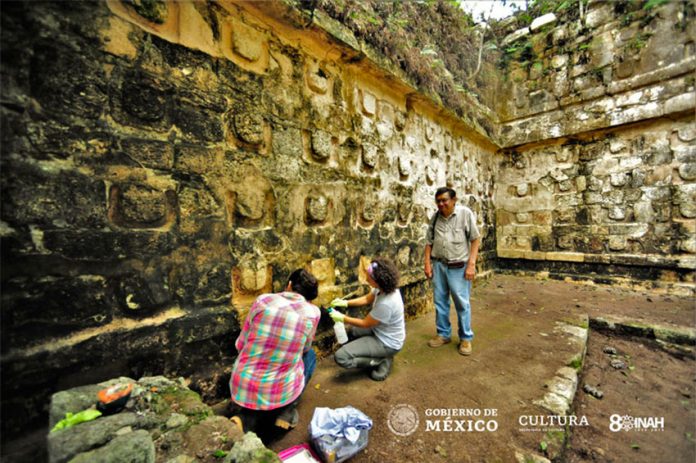Archaeologists have discovered a large palace at Kulubá, an ancient Mayan city set amid jungle in the eastern Yucatán municipality of Tizimín.
The National Institute of Anthropology and History (INAH) said in a statement that the palace is situated to the east of the main plaza in the area of structures known as Group C.
Archaeologists and restoration specialists made the discovery while carrying out conservation work funded by the Yucatán government.
Archaeologist Alfredo Barrera Rubio said the structure is approximately 55 meters long, 15 meters wide and six meters high. Stone columns adorn a corridor in the upper part of the palace, which is accessible via staircases.
The palace was likely used by the elite of Kulubá, INAH said, adding that relics found in and near the structure suggest that it was occupied between the years 600 and 1050 BC. The 450-year period concludes at the end of the terminal classic period when many Mayan cities were abandoned.
Barrera said that during the terminal classic period – 850 to 1050 BC – the city of Chichén Itzá extended its influence over smaller Mayan cities including Kulubá.
“From data . . . and the Chichén-like ceramic materials and obsidian [found at Kulubá] . . . we can infer that it became an enclave [under the control] of Chichén Itzá,” he said.
Archaeologists are currently exploring four other structures in Group C – an altar, two dilapidated residential buildings and a round structure believed to be an oven – while experts are carrying out restoration work on buildings in Groups A and B.
Residents of nearby communities and builders from the municipality of Oxkutzcab who have extensive experience in the restoration of archaeological sites are assisting the INAH team.
Natalia Hernández Tangarife, a co-coordinator of the restoration project, said that certain parts of Kulubá are being reforested in order to protect structures from sunlight and wind. Experts are also mapping the site and tests will be carried out to determine the sex, age and other characteristics of several individuals whose remains were found in a Kulubá grave.
The site’s name is believed to come from the Mayan word K’ulu’ – a wild dog-like animal that inhabited the area.
Boasting some of the last swathes of jungle in Tizimín and inhabited by a range of native animals including spider monkeys, Kulubá will open to the public in the medium term, INAH said.
Restoration work began in 2018 to prepare the site for opening to the public.
Mexico News Daily
